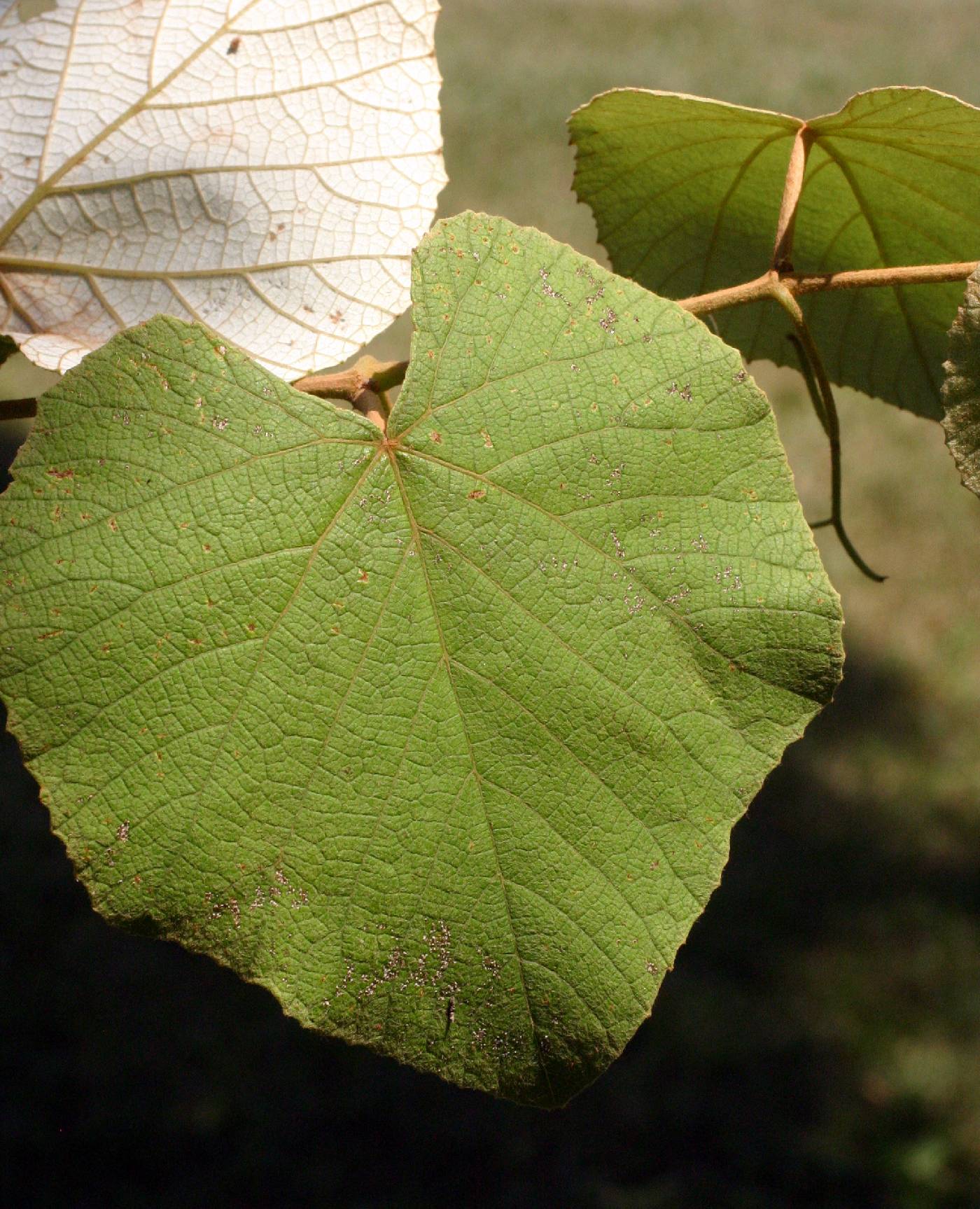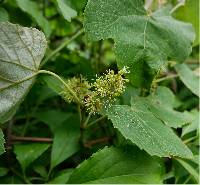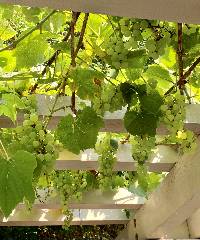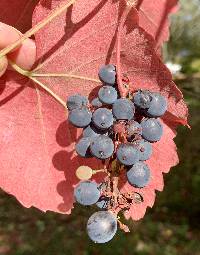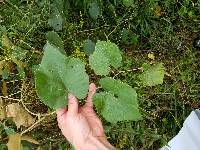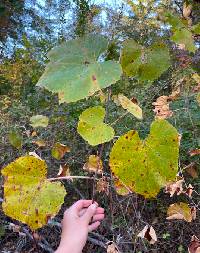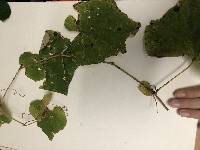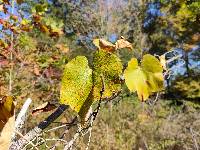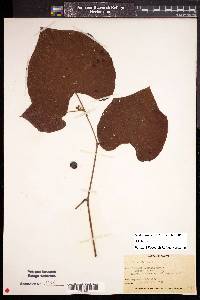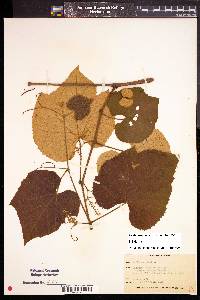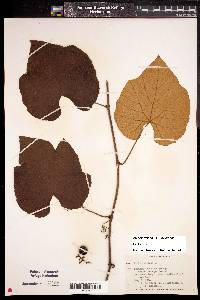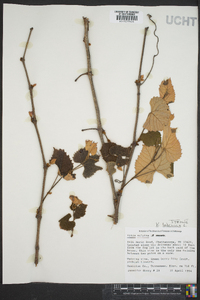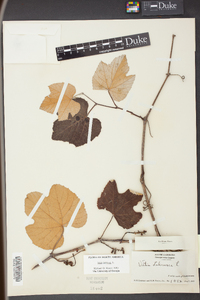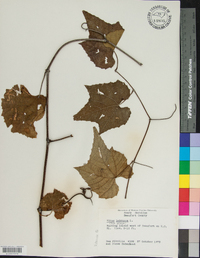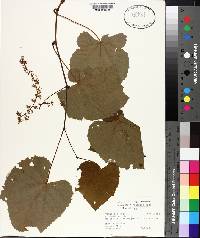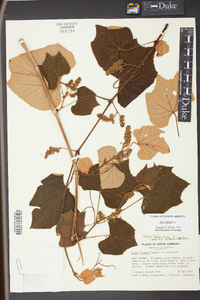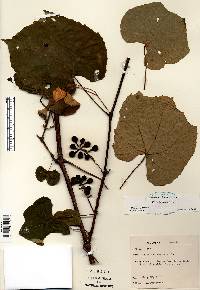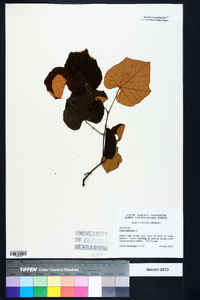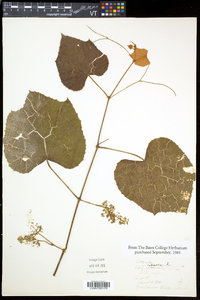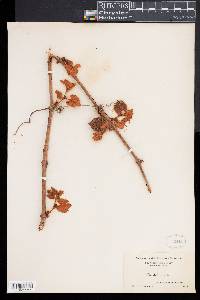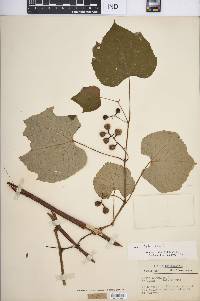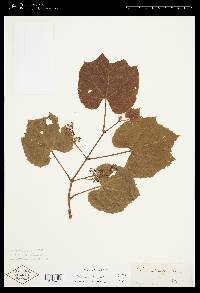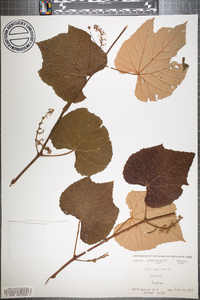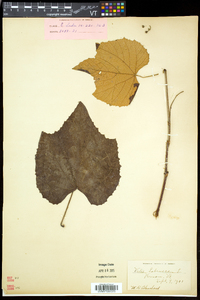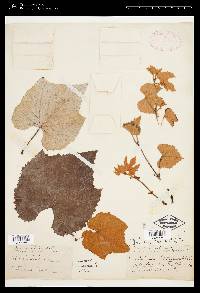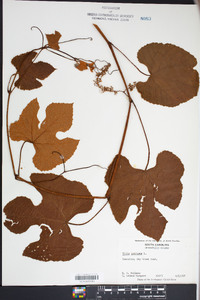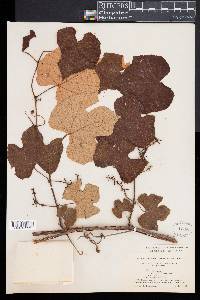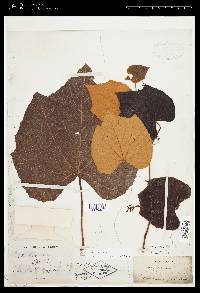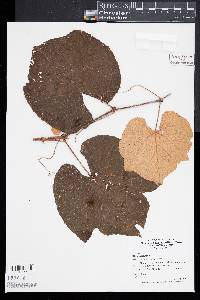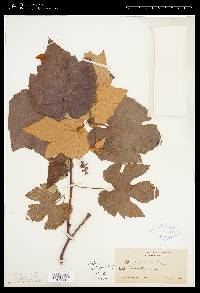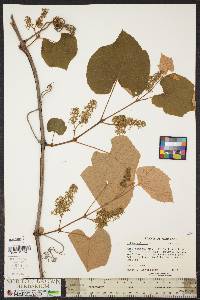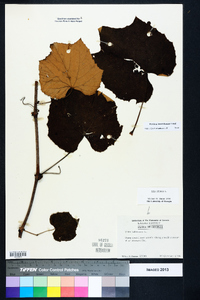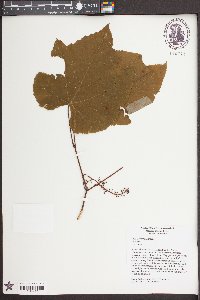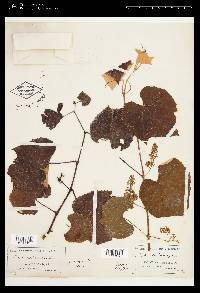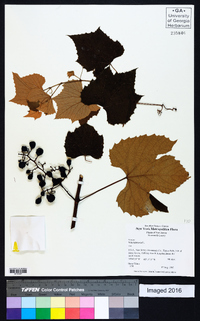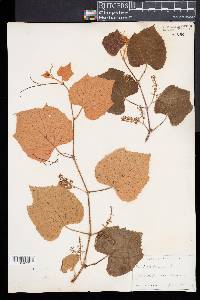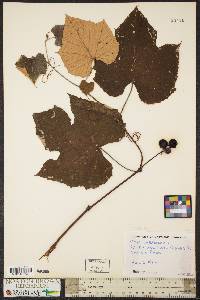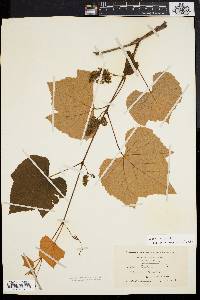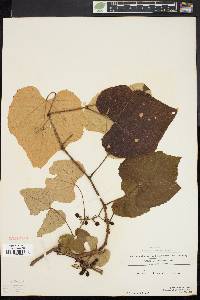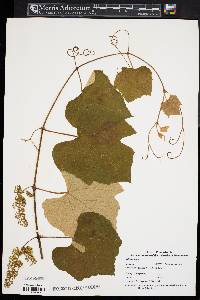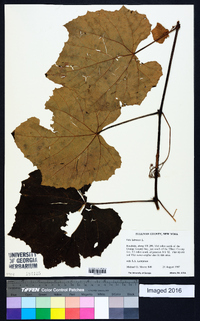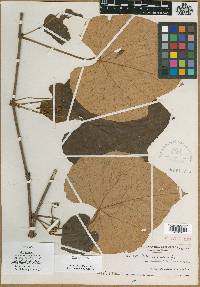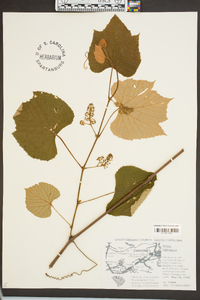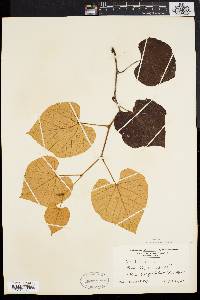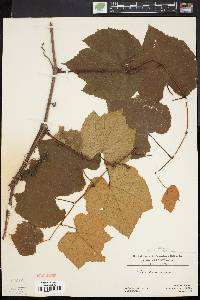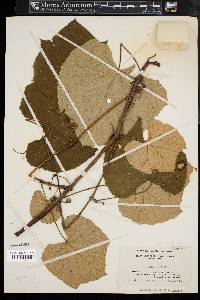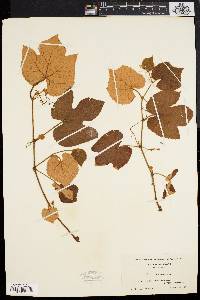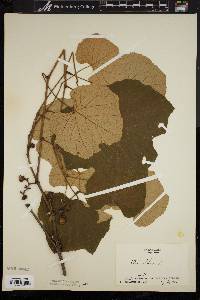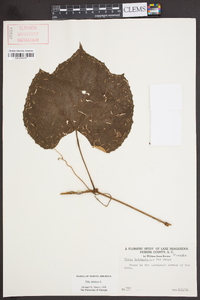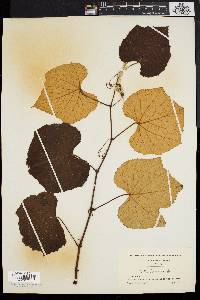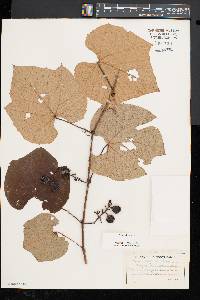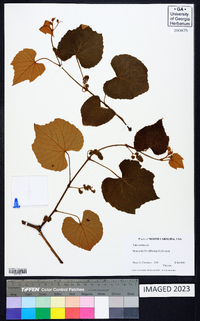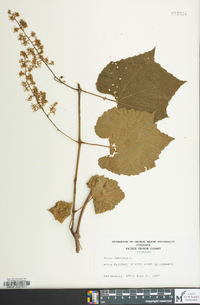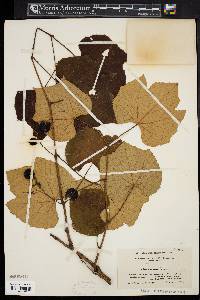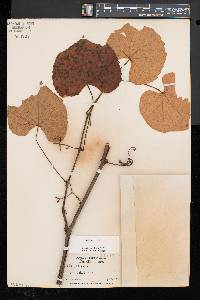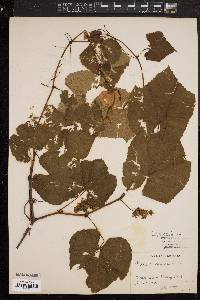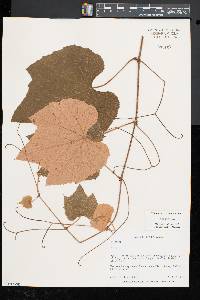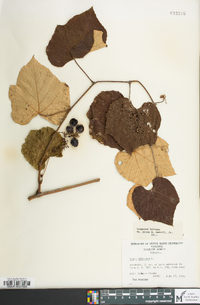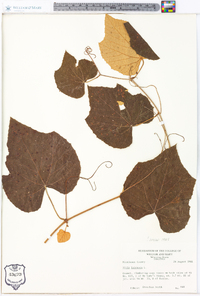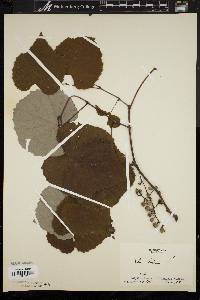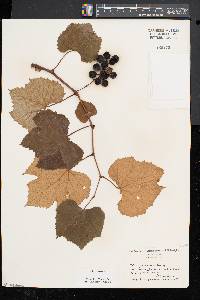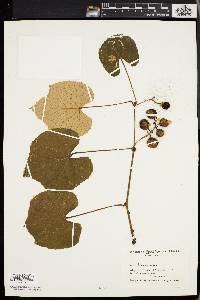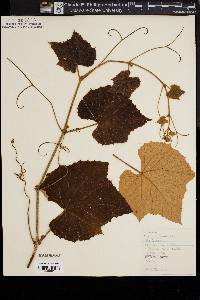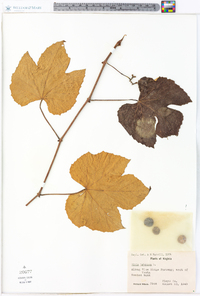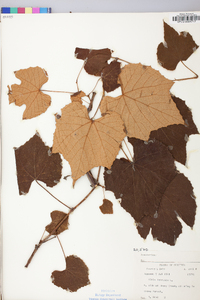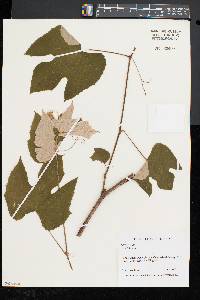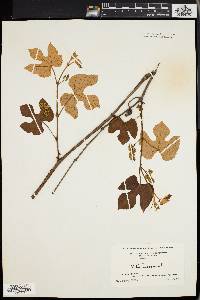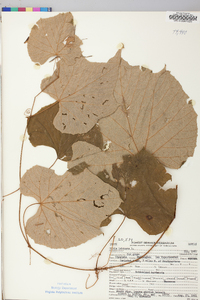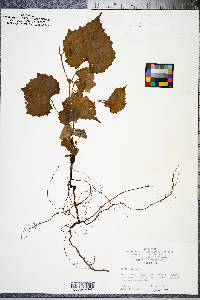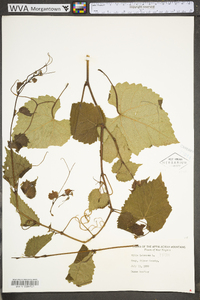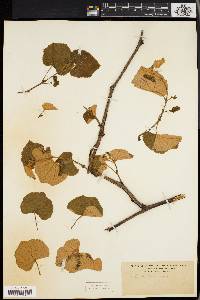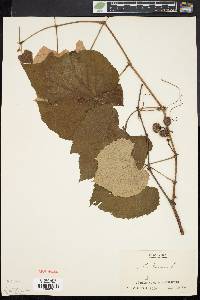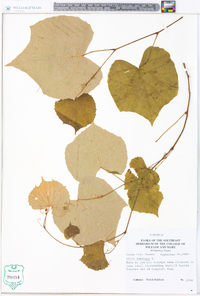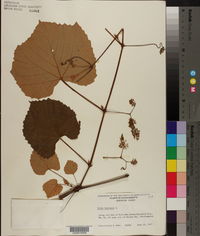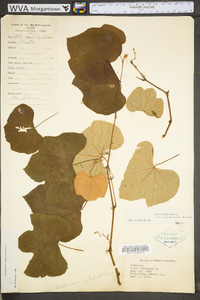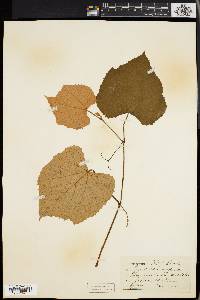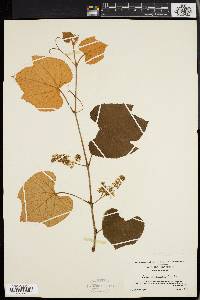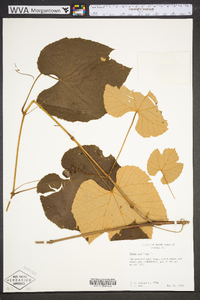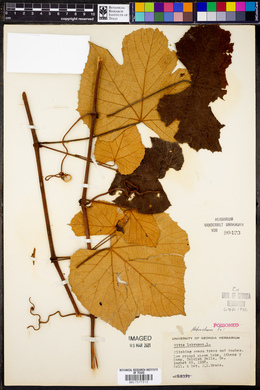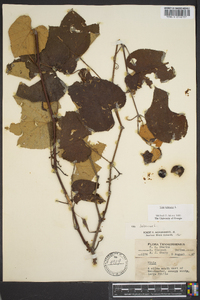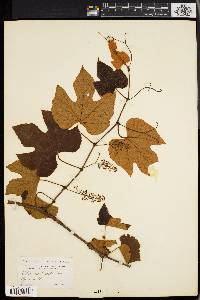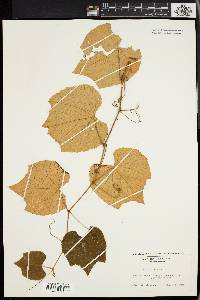
|
|
|
|
Family: Vitaceae
Fox Grape
|
Perennial woody vine Stem: high-climbing, hairy when young, becoming hairless, inner spongy part of stem (pith) chambered (0.5 - 2.5 mm) at nodes. Leaves: alternate, 10 - 20 cm long, rounded to heart-shaped, shallowly three-lobed, shallowly toothed, firm, the lower surface covered with reddish hairs that are replaced by ash gray hairs with age. Inflorescence: functionally either male or female and borne on the same plant (sub-monoecious), borne opposite the leaves (at three or more successive nodes), 4 - 8 cm long, egg-shaped, with hairy stalks becoming hairless with age. Flowers: numerous, greenish, tiny, five-petaled. The functionally male flowers have five long, erect stamens and a poorly developed pistil. Functionally female flowers with a well-developed pistil and five functionless, short, reflexed stamens. Fruit: a juicy berry, dark red to nearly black, 1 - 2 cm across, containing egg-shaped seeds. Tendrils: opposite the leaves, at three or more successive nodes. Similar species: Vitis aestivalis and Vitis cinerea var. cinerea have tendrils or inflorescences at no more than two successive nodes. Vitis riparia and Vitis vulpina are commonly lacking tendrils or inflorescences opposite every third leaf and the leaves become hairless except along the veins. Flowering: late May to early June Habitat and ecology: Locally common in low woods of the dune area, this species also grows in sandy black oak savannas, sandy bogs, and lichenose barrens. Occurence in the Chicago region: native Notes: This species is the ancestor to many cultivated grapes like the Concord. Etymology: Vitis is the Latin word for vine. Labrusca is an old name for a wild vine. Author: The Morton Arboretum High-climbing vine; pith interrupted at the nodes by a diaphragm; tendrils or infls from 3 or more successive nodes; lvs firm, round-cordate, 1-2 dm, usually shallowly 3- lobed, shallowly serrate, the lower surface persistently covered by a dense tomentum, this reddish or rusty when young, sometimes later fading to ashy-gray; peduncles and twigs eventually glabrous; panicles ovoid, 4-8 cm; fr dark red to nearly black, 1-2 cm; 2n=38. Woods, roadsides, and thickets; Me. to s. Mich., s. to S.C. and Tenn. Ancestor of the Concord and many other cult. grapes, including many hybrids, these collectively called V. labruscana L. H. Bailey and occasionally found as waifs. Gleason, Henry A. & Cronquist, Arthur J. 1991. Manual of vascular plants of northeastern United States and adjacent Canada. lxxv + 910 pp. ©The New York Botanical Garden. All rights reserved. Used by permission. From Flora of Indiana (1940) by Charles C. Deam This species is apparently restricted to the northwestern and southeastern parts of the state. In the northwestern part it is found in low ground in woods, usually associated with pin and black oaks or in the dunes mostly on the mucky borders of streams and ditches. In the southeastern part it is generally found in the "flats" in woodland or along roadsides. At least in this section of the state it prefers the mediacid soils and is associated with sweet gum, pin oak, and beech. The color of the fruit of this species is usually purplish black. The late Wm. Henderson, a grower and collector of medicinal plants, who lived about 11 miles northeast of Greensburg, found in Franklin County a wild plant of this species that bore yellow green fruit. He sent me seed and a part of the original plant which I now have growing. Seed were planted and seedlings were widely distributed to botanical gardens. The seedlings do not all have green fruit. …… Indiana Coefficient of Conservatism: C = 6 Wetland Indicator Status: FACU |
|
|
|

